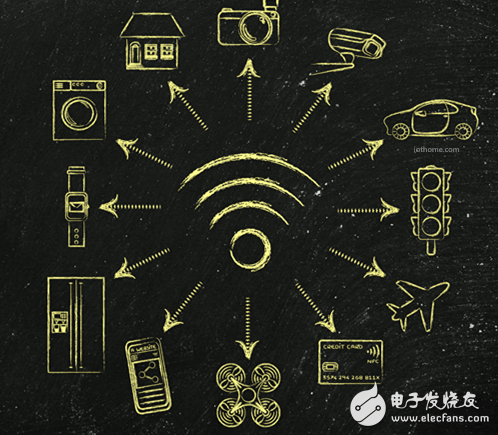Under the background of the development of the Internet of Things, the IoT solution is an important strategy for almost all industries and markets. According to the market survey, the following ten trends will become the main IT technologies in 2018.
The leading corporate IT strategy in 2018 will be the adoption of the IOT (IoT) platform and other areas. Hitachi Vantara is released by Global Technology Officer Hubert Yoshida and Asia Pacific Technical Officer Russell Skingsley for the 2018 Asia Pacific Technology Development. trend.
Smart object storage, analytics and AI, and full expansion of enterprise agile methods will play an important role in the coming year

IoT solutions will quickly become an important strategy for almost all industries and markets, and provide key insights to drive enterprise digital transformation. IT must work closely with business operations to focus on specific business needs and define the scope of IoT projects.
Yoshida said: "If you have a deep understanding of the business and the right infrastructure, and correctly simulate and digitize the actual operations and processes, it will be difficult to construct a truly valuable IoT solution, so choose the right IoT platform. And the service provider is very important."
Skingsley added: "Companies should look for an open and resilient IoT platform to simplify integration with supporting technologies to provide an expandable foundry and build a variety of industrial applications to assist companies Designed, built, tested and deployed quickly and easily."
Second, the object storage intelligenceThe first problem that enterprises have encountered in digital transformation this year is the ability to access data. Data is usually stored in silos, and the cost of capture and use is high. These silos are built for specific purposes and cannot be shared, many of which contain data that is duplicated, outdated, or no longer used because of changes in business processes or responsible persons.
Sparksley said: “Data scientists tell us that 80% of the data acquisition and analysis insights are tedious data acquisition and preparation. The concept of data lake is fascinating, but we can't directly inject data into the system unless the data It is properly cleaned, formatted, and indexed or tagged with metadata to make the data lake content-aware, otherwise the data swamp is formed."
Although object storage can store large amounts of unstructured data and provide metadata management and search capabilities, it lacks context awareness. Object storage is now "intelligent", and software can be used to search and read content from multiple structured and unstructured data silos and analyze it for cleansing, formatting, and indexing.
“Hitachi Content Intelligence is able to extract data from silos and send it to the workflow and process it in a variety of ways. Content Intelligence users can be empowered to view sensitive content and keep files in control,†says Skingsley. Content Intelligence enables a standard and consistent enterprise search process across the IT environment, connecting and bringing together multi-structured data across heterogeneous data silos and locations, automatically extracting, grading, and augmenting all of your organization's data. And classification."
Third, analysis and artificial intelligenceIn 2018, analytics and artificial intelligence (AI) will grow in full and companies will receive real investment returns. IDC points out that by the end of 2017, one-third of Fortune 500 companies will have revenue growth from information products that is more than double the mix of products and services.
Singsley said: "AI has become the mainstream of consumer products, such as Amazon Alexa and Apple Siri, and Hitachi believes that AI and human collaboration will bring substantial benefits to society. Through tools such as Pentaho Data IntegraTIon, our goal is to bring data The popularity of engineering and data science processes makes it easier for developers and engineers to get machine intelligence (a combination of machine learning and AI)."
Pentaho's machine learning integration with languages ​​such as R, Python, and machine learning technologies such as Spark MLlib is moving in this direction. Lumada (Hitachi's IoT Platform) provides flexible input and output and standardized connectivity to automate the configuration and management of resources to extend IoT machine learning and is compatible with Python, R and Java for machine learning.
Fourth, more widely used video analysisVideo content analysis will become the “third eyeâ€, bringing greater insight, productivity and efficiency to areas other than public safety. Algorithms that automatically detect and determine temporal, spatial, and relational events combined with other IoT information, such as mobile GPS and social media information, will be used in a variety of industries such as retail, medical, automotive, manufacturing, education, and entertainment.
Yoshida believes that video can provide unique features such as self-moving (3D motion for autonomous robot navigation) behavior analysis and other forms of situational awareness.
Yoshida said: “Retailers use video to analyze customer movement patterns and dwell times to locate products and maximize their sales. Video analysis relies on good video input, so video enhancements such as noise removal, image stabilization, shielding and super-resolution are required. Technology. Video analytics has great potential for ease of use, ROI, and for enabling actionable analysis."
Dongguan Tuojun Electronic Technology Co., Ltd , https://www.fibercablessupplier.com